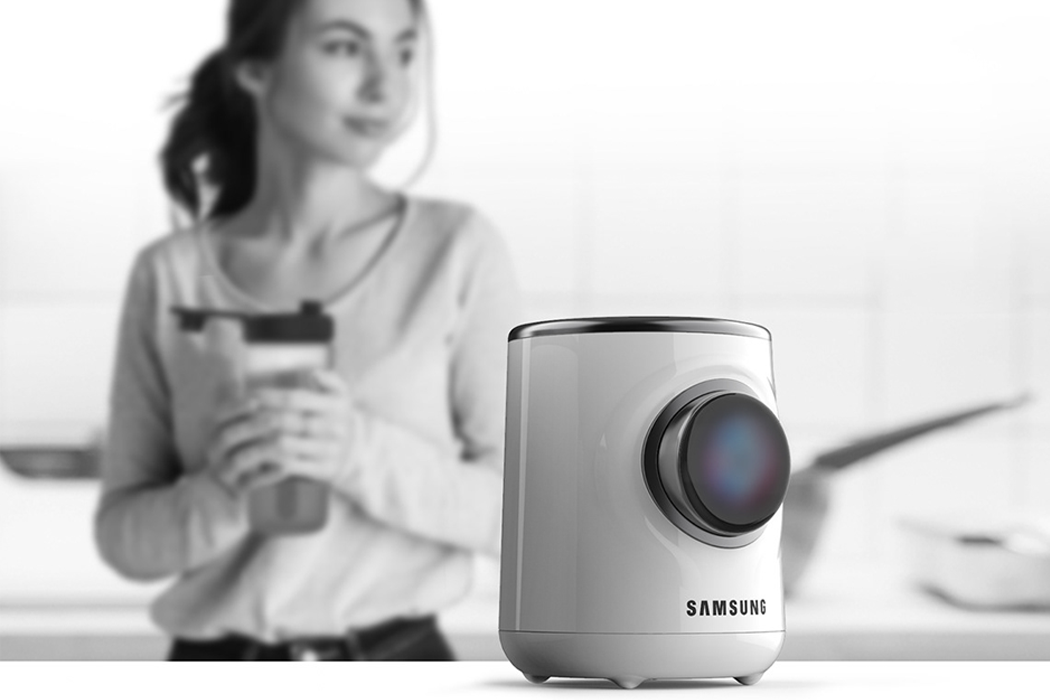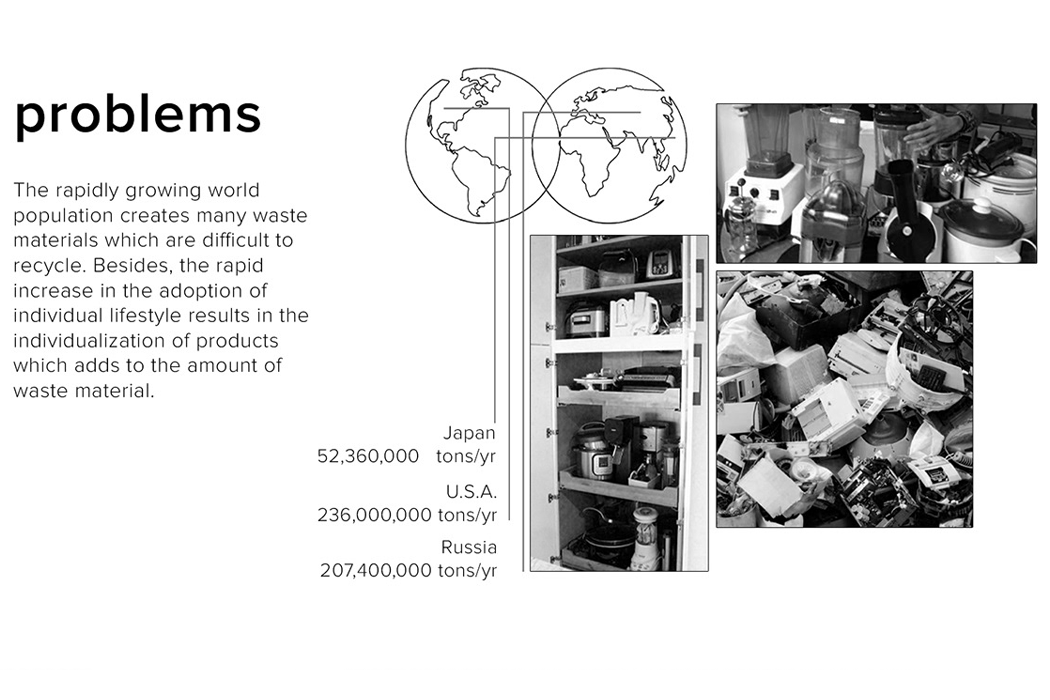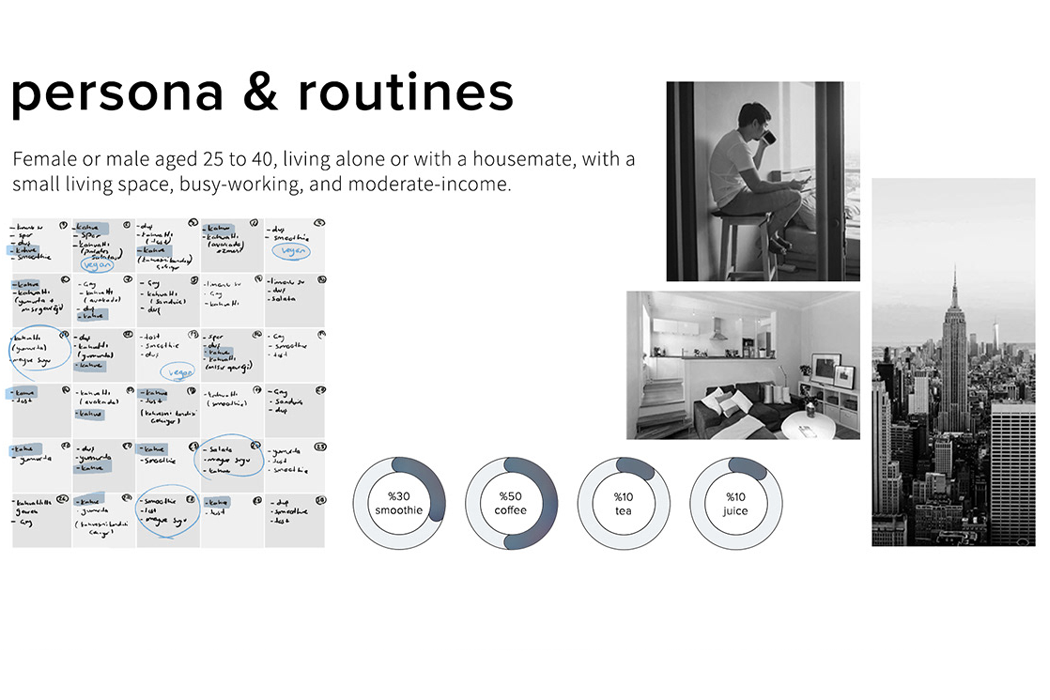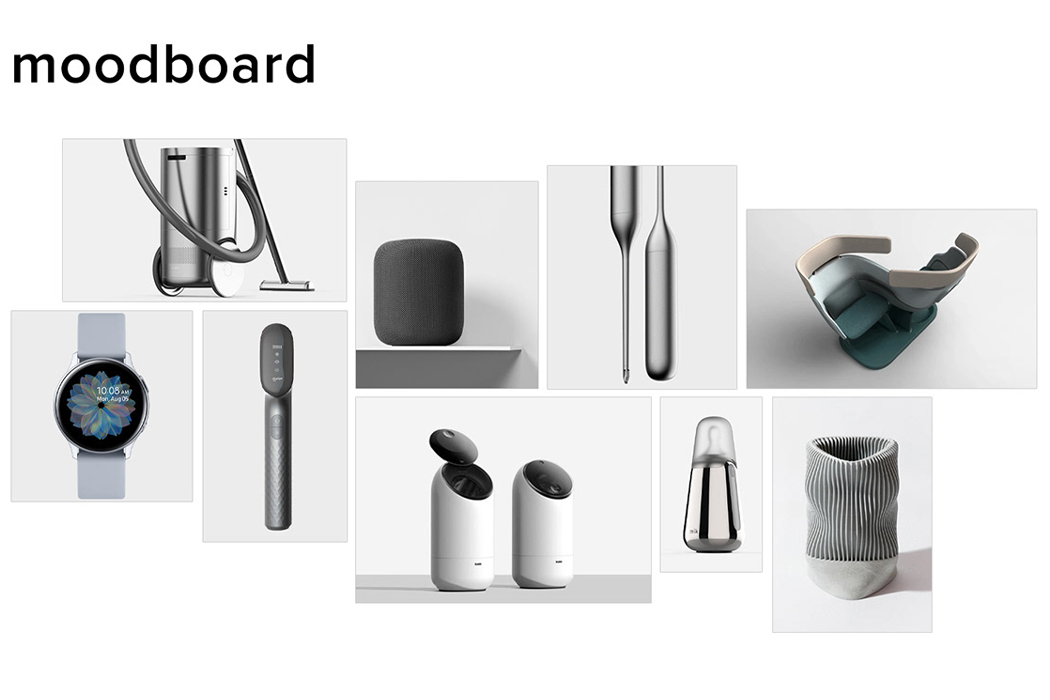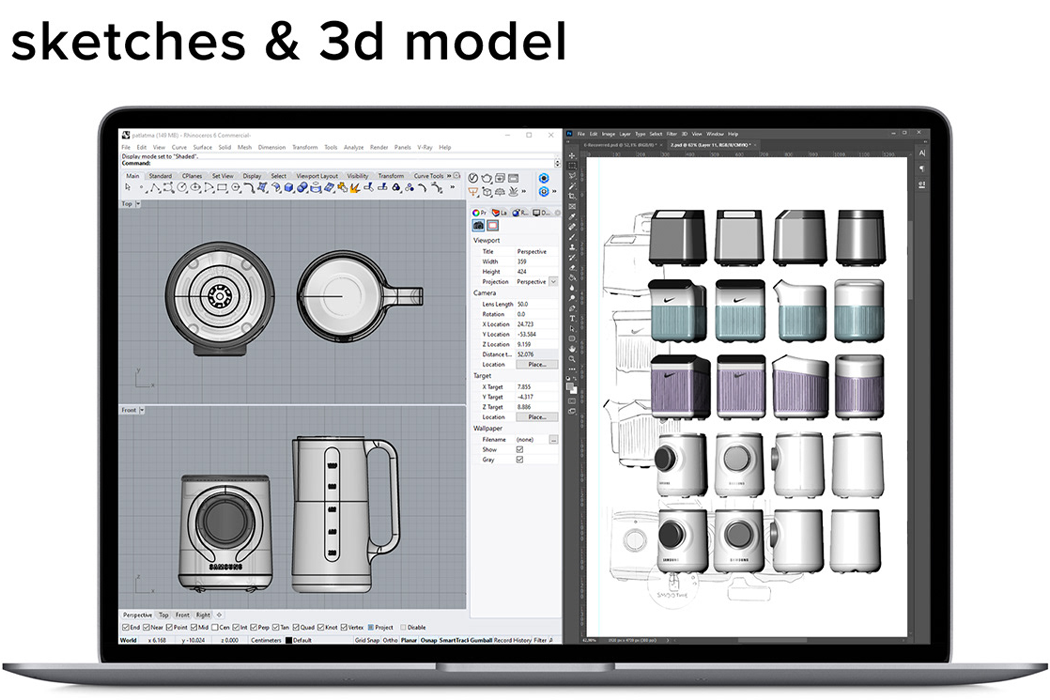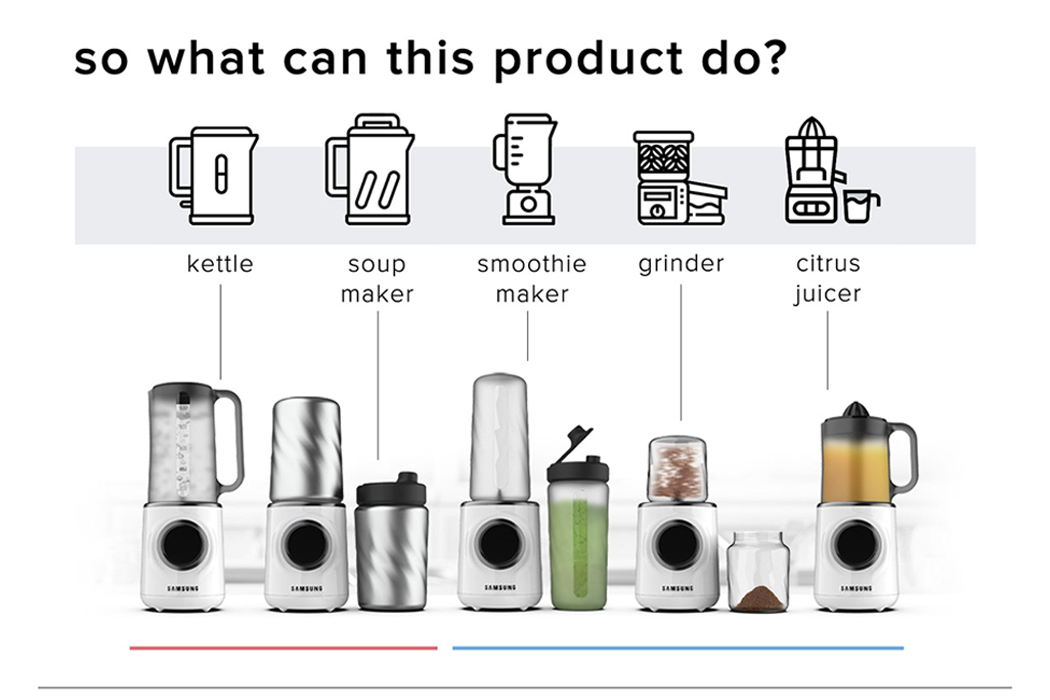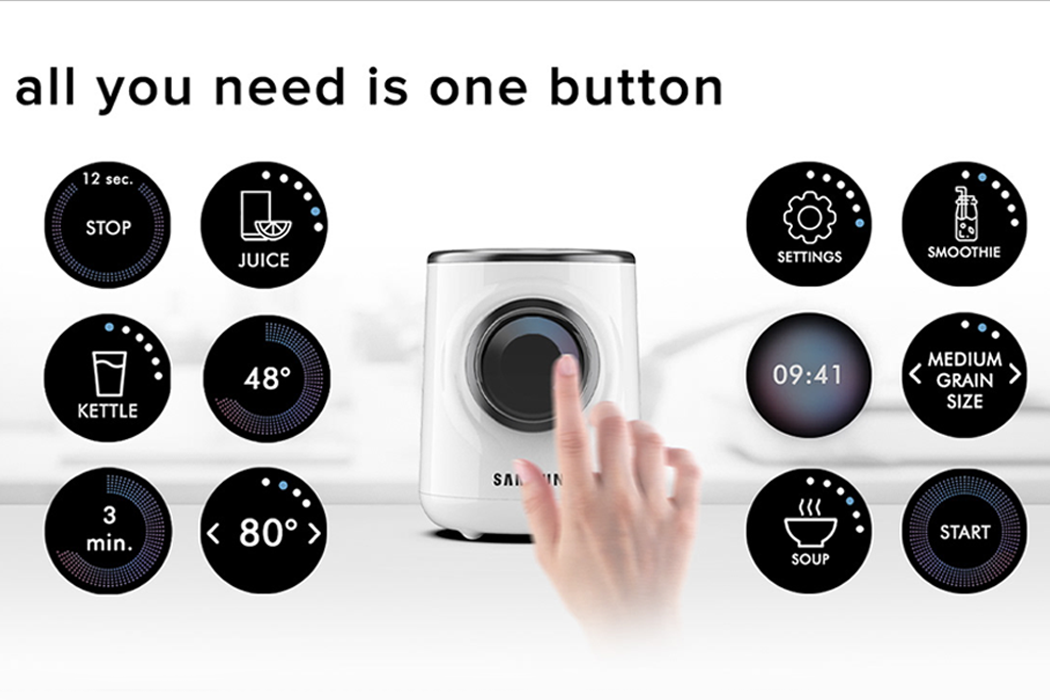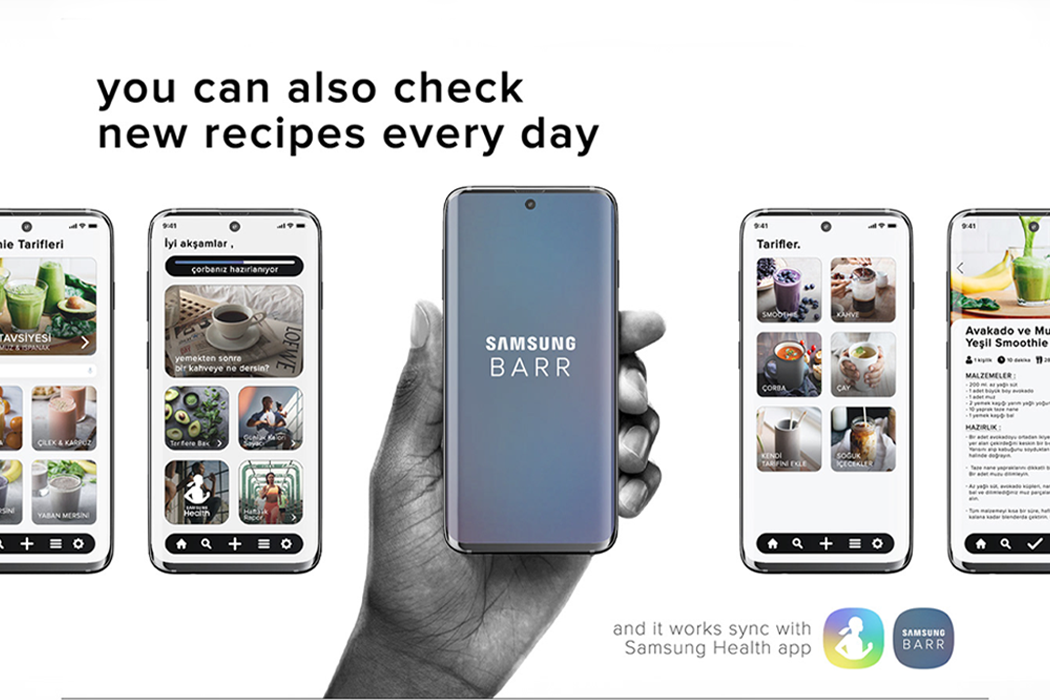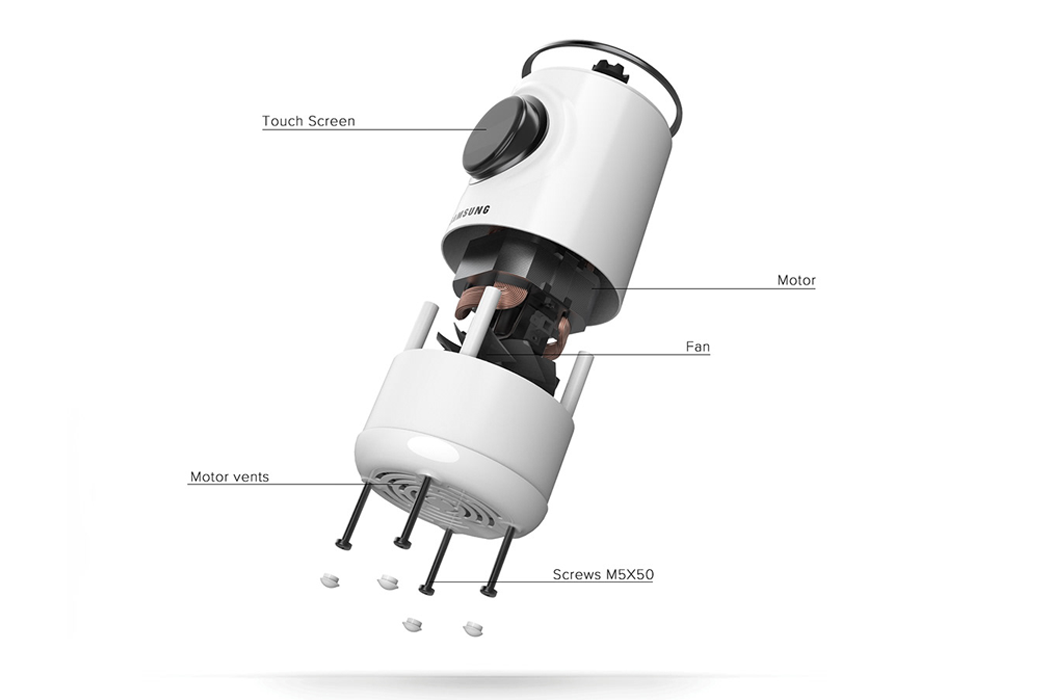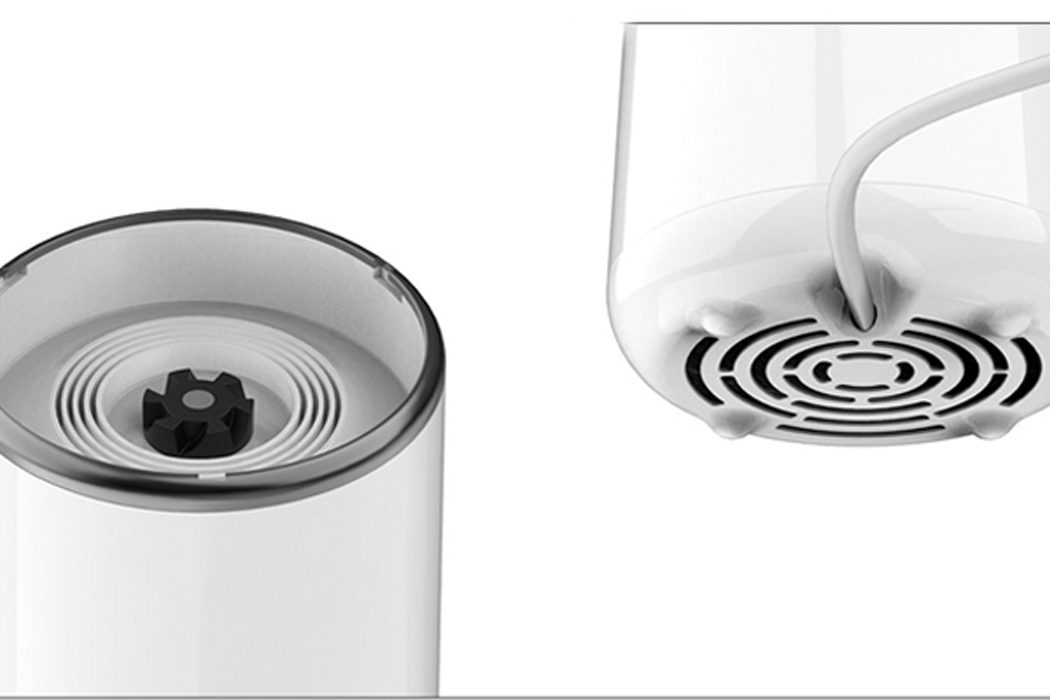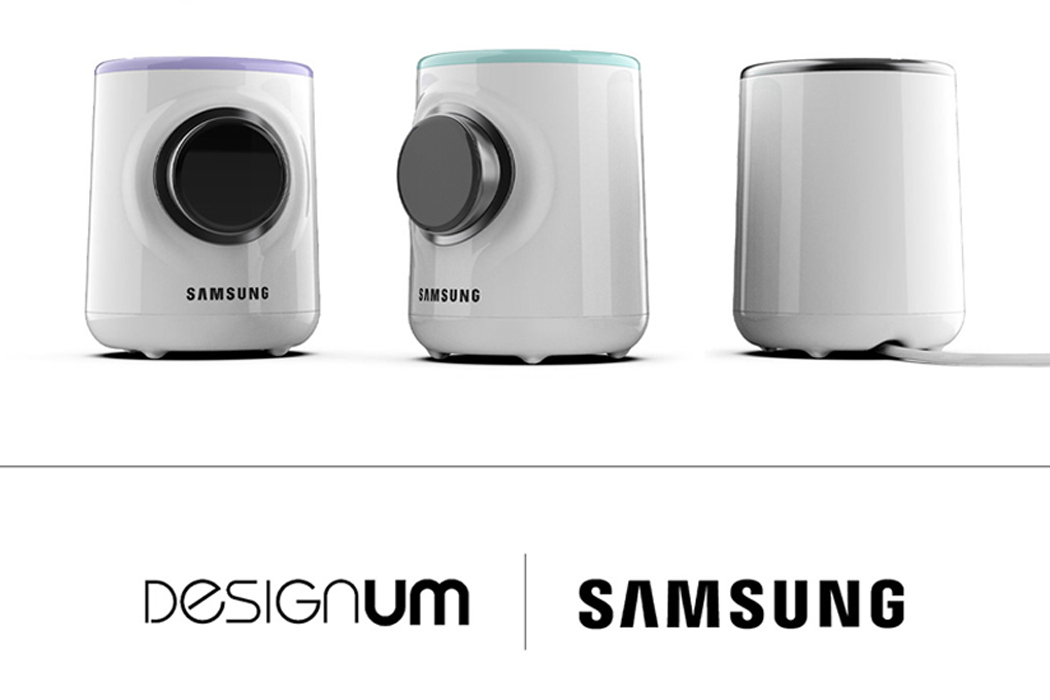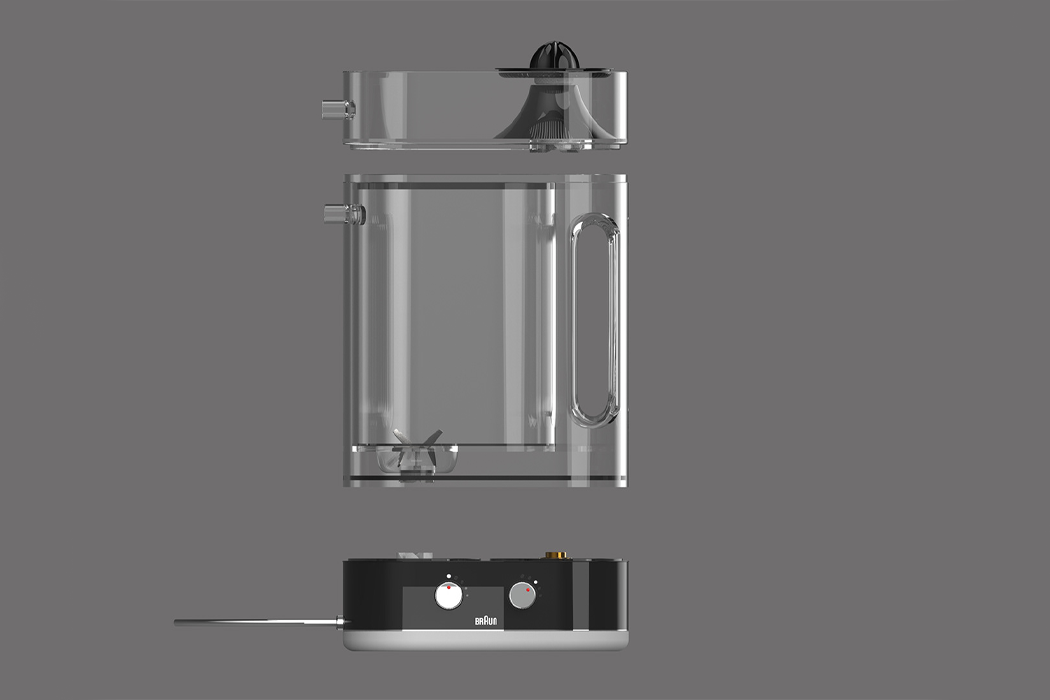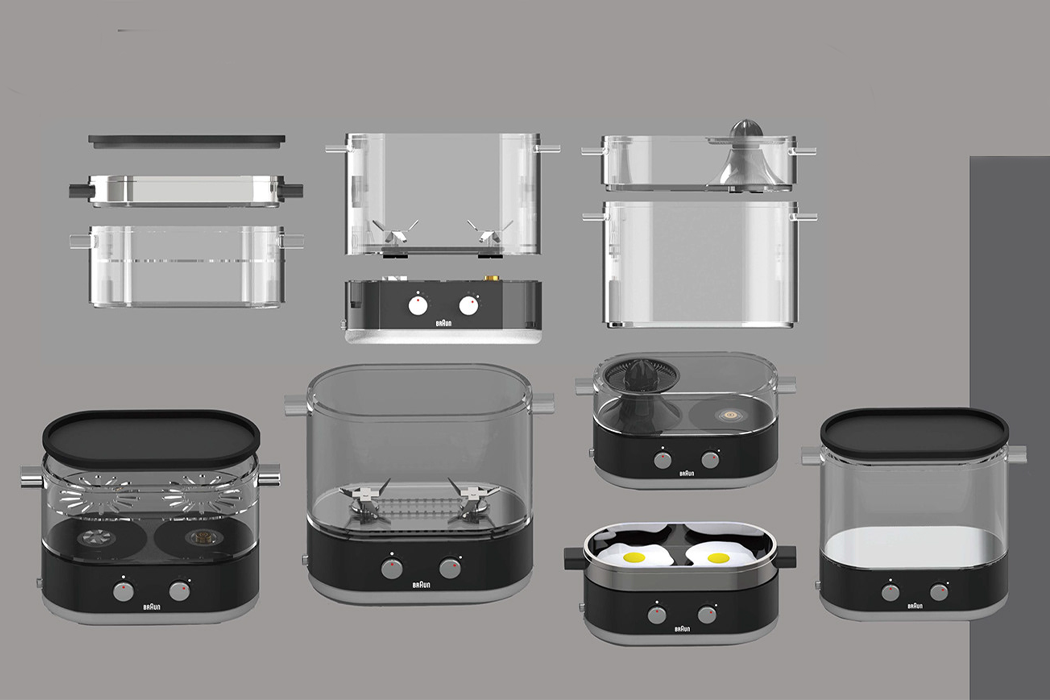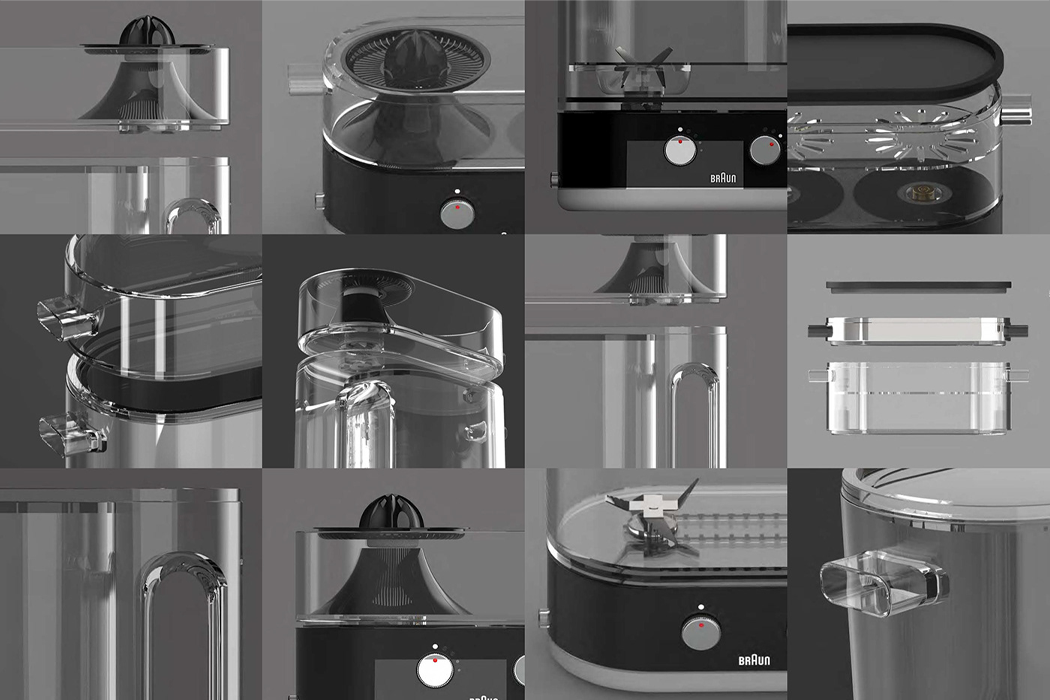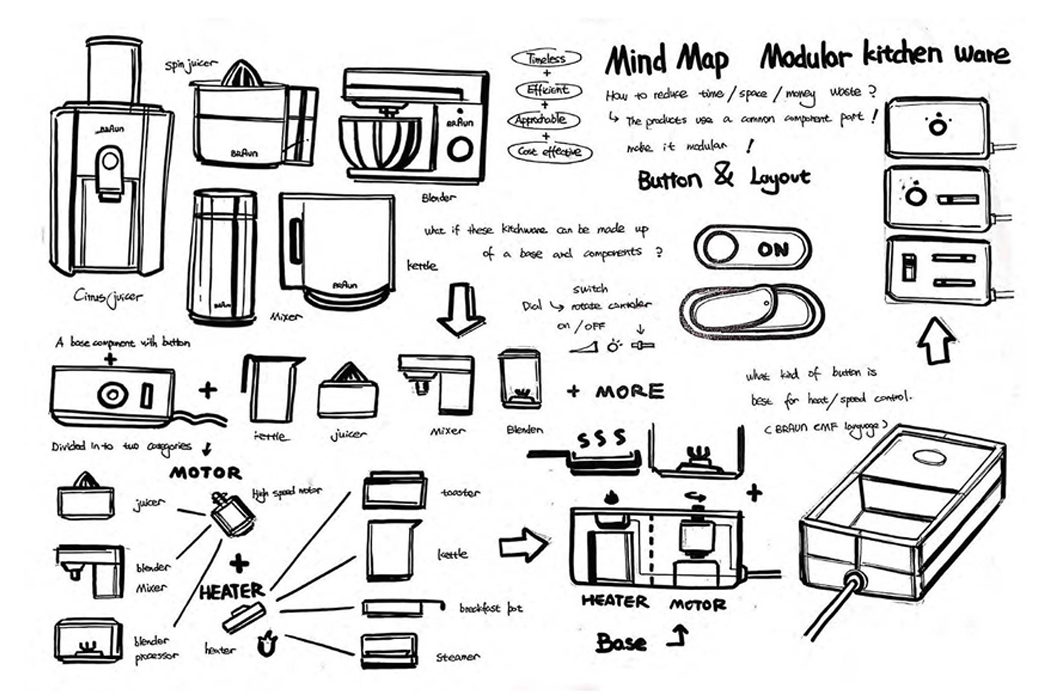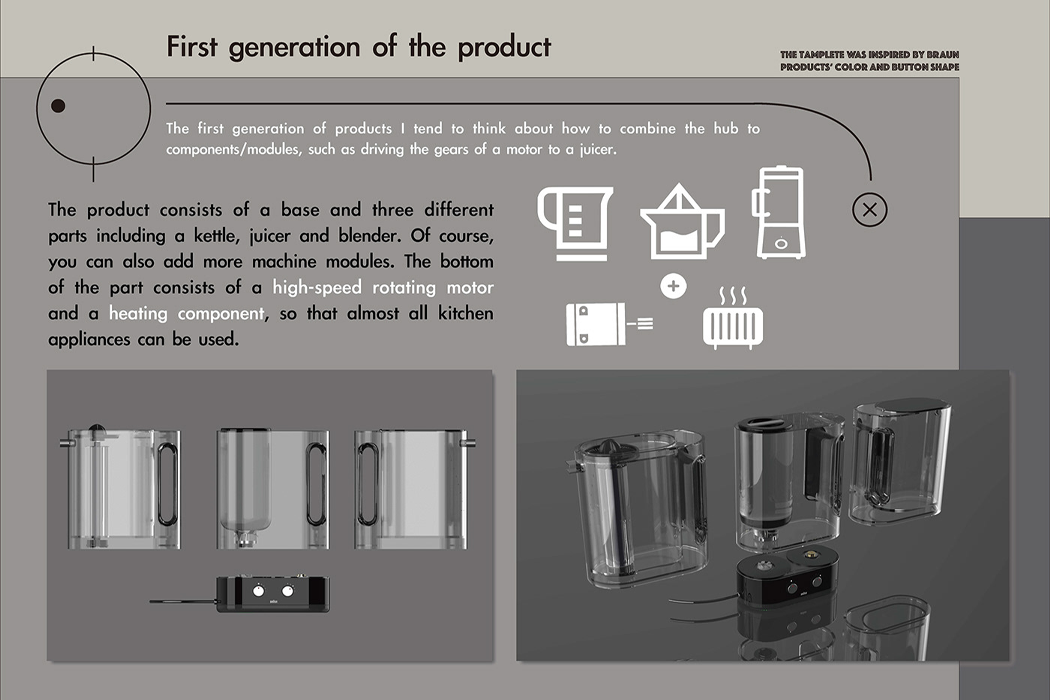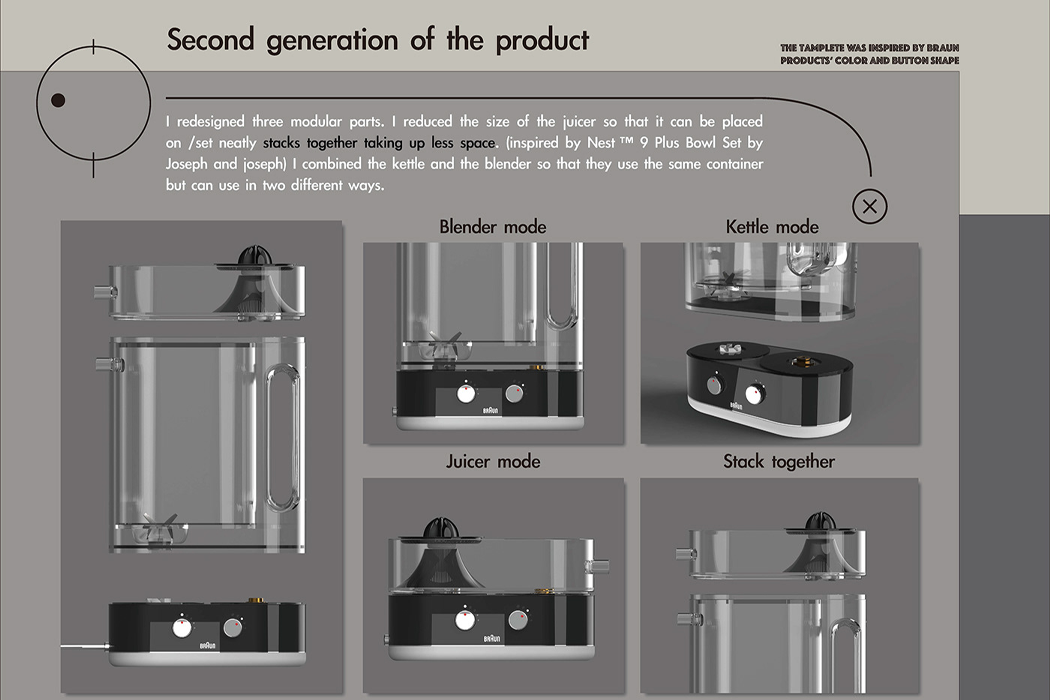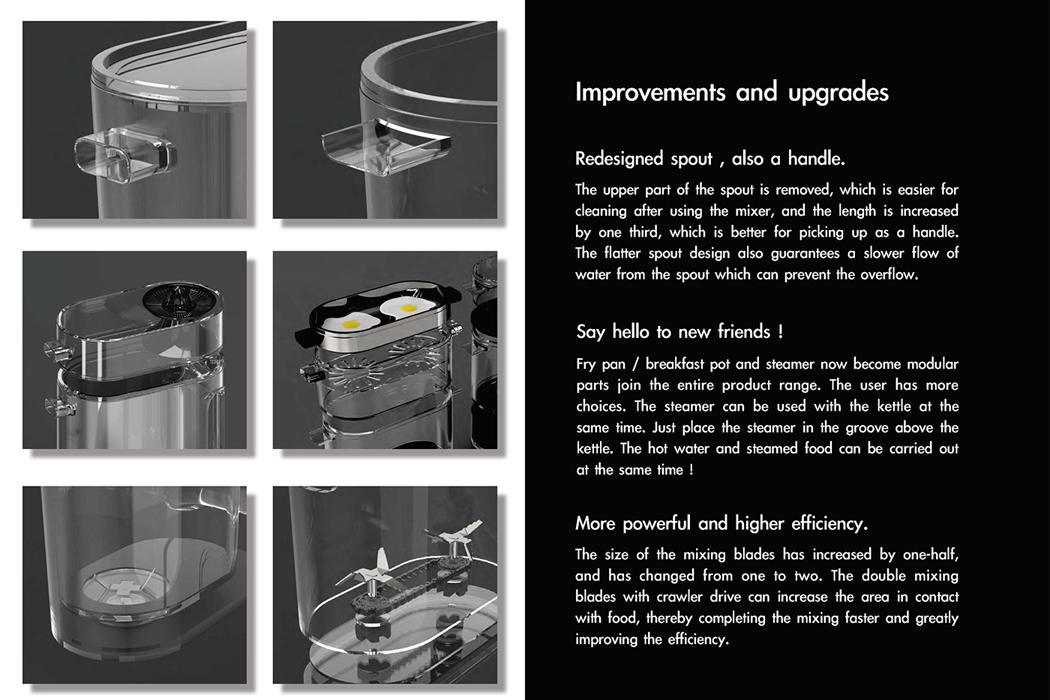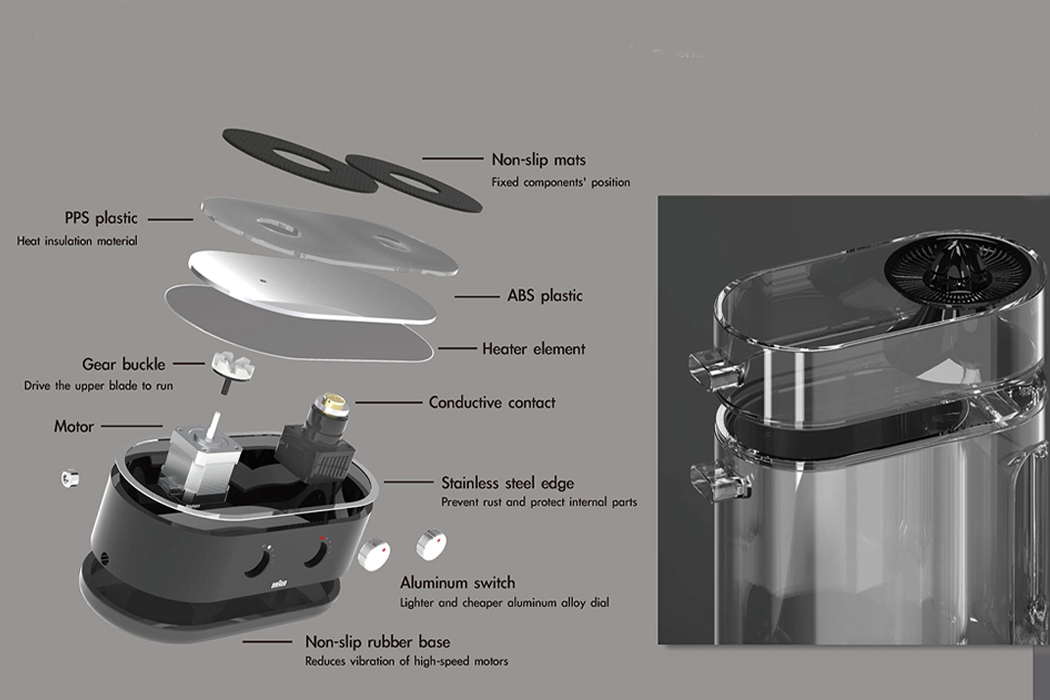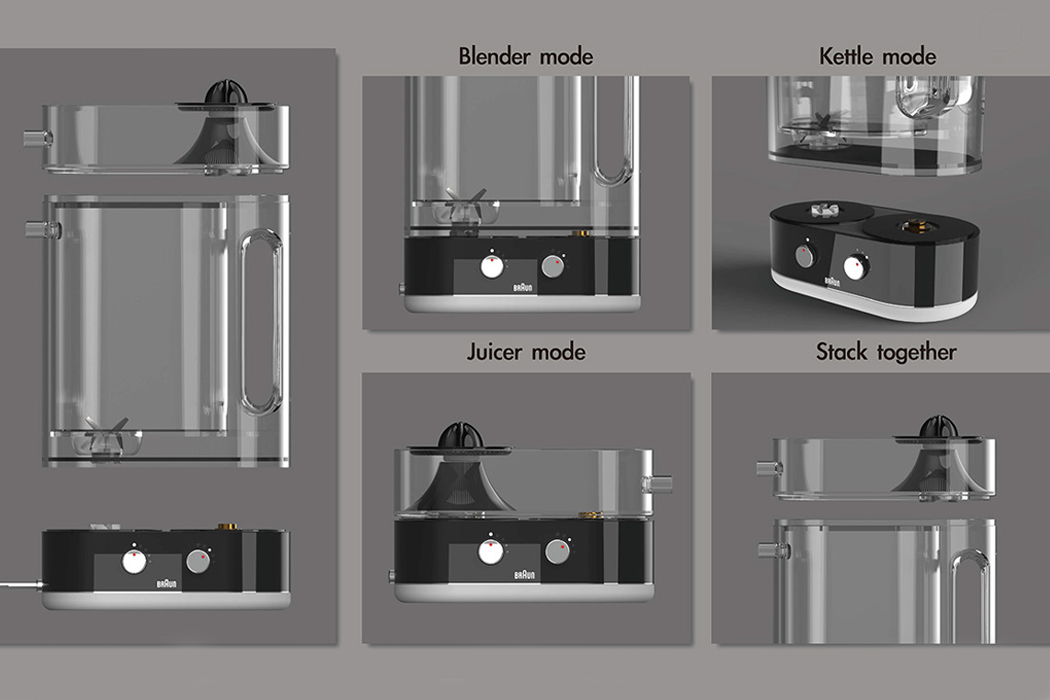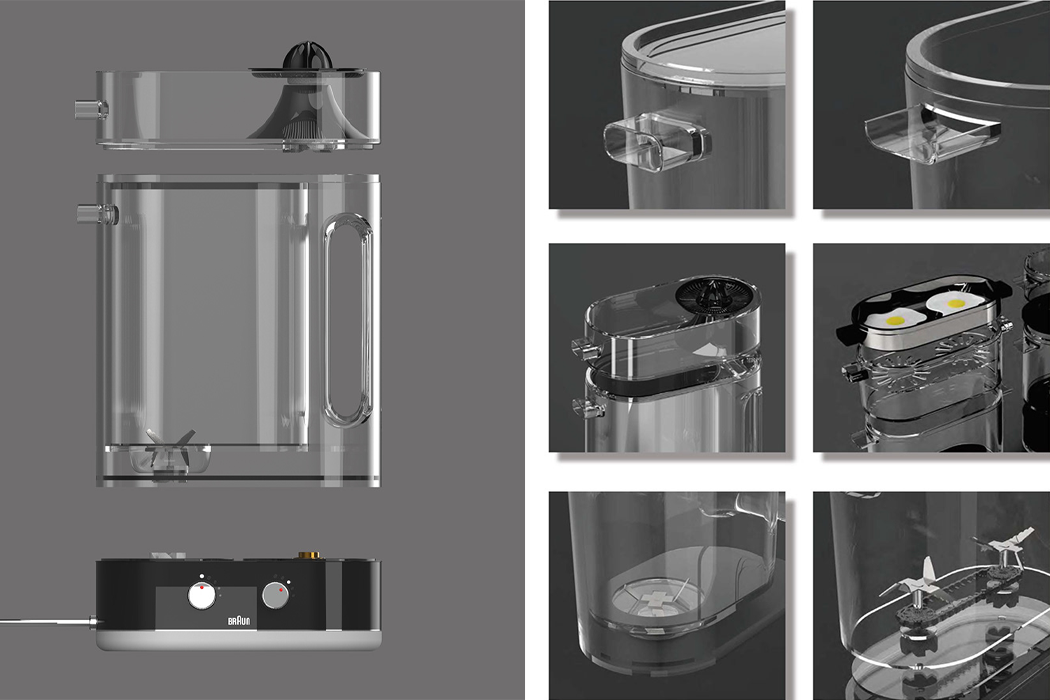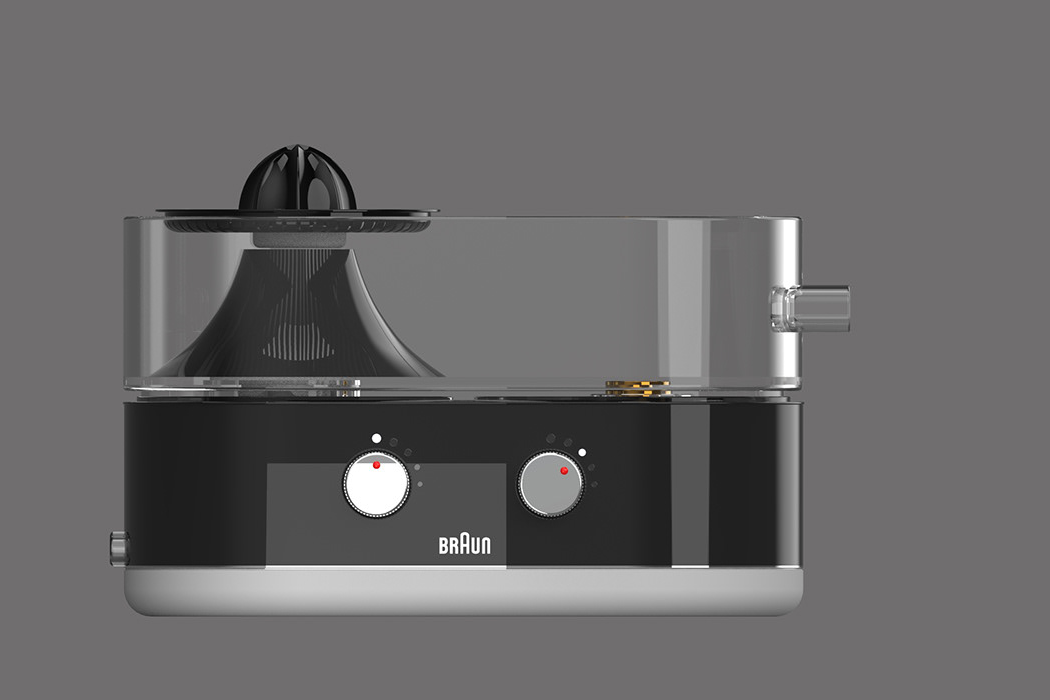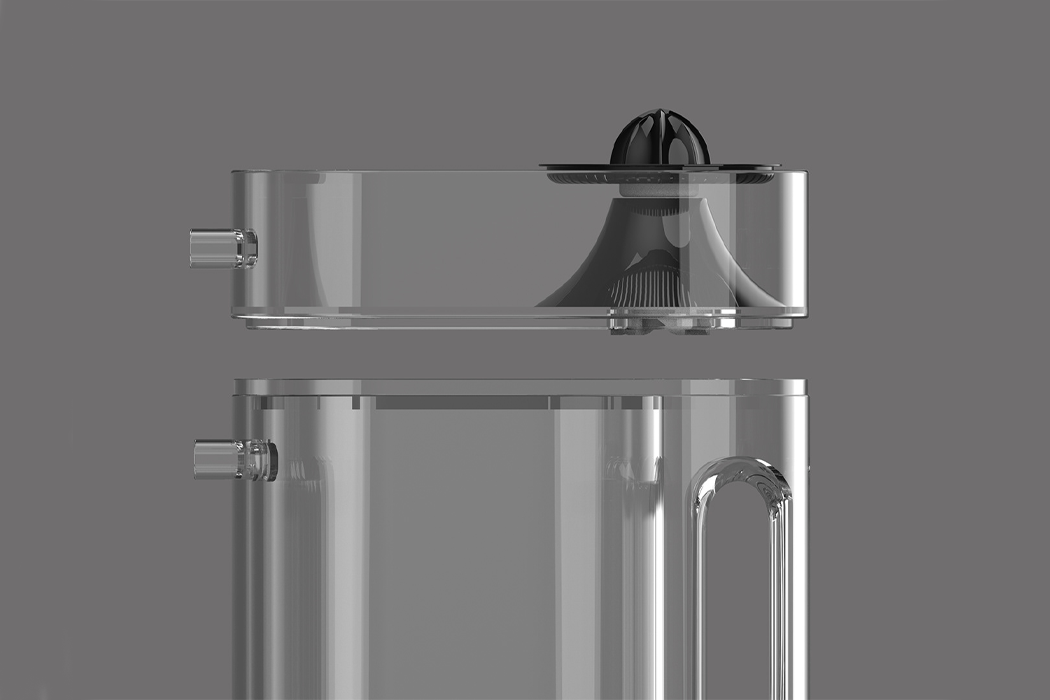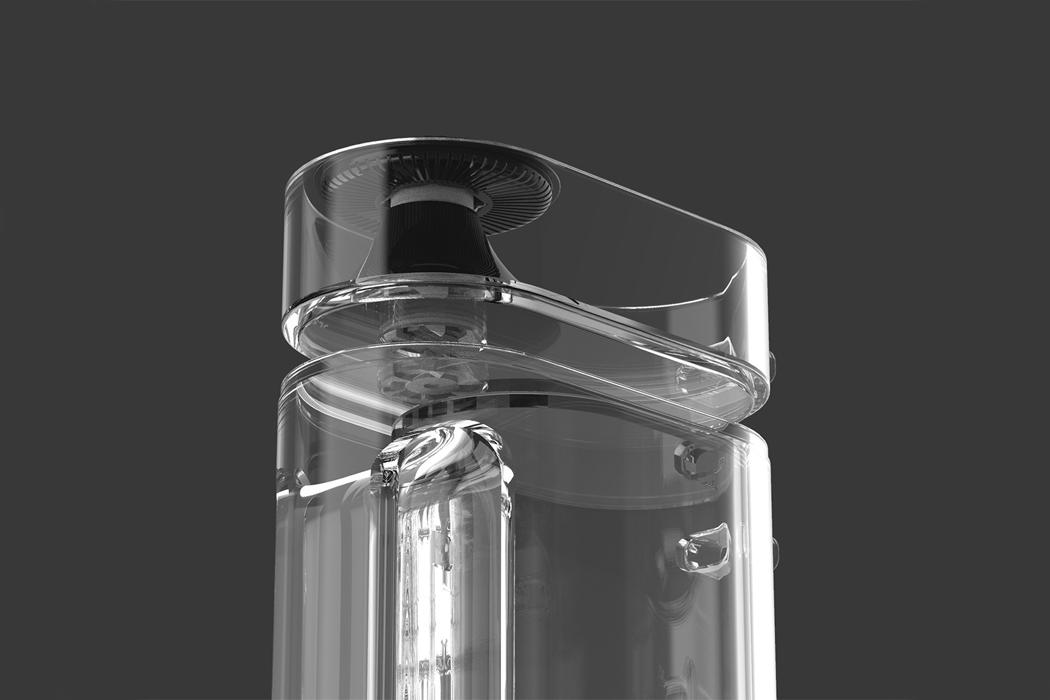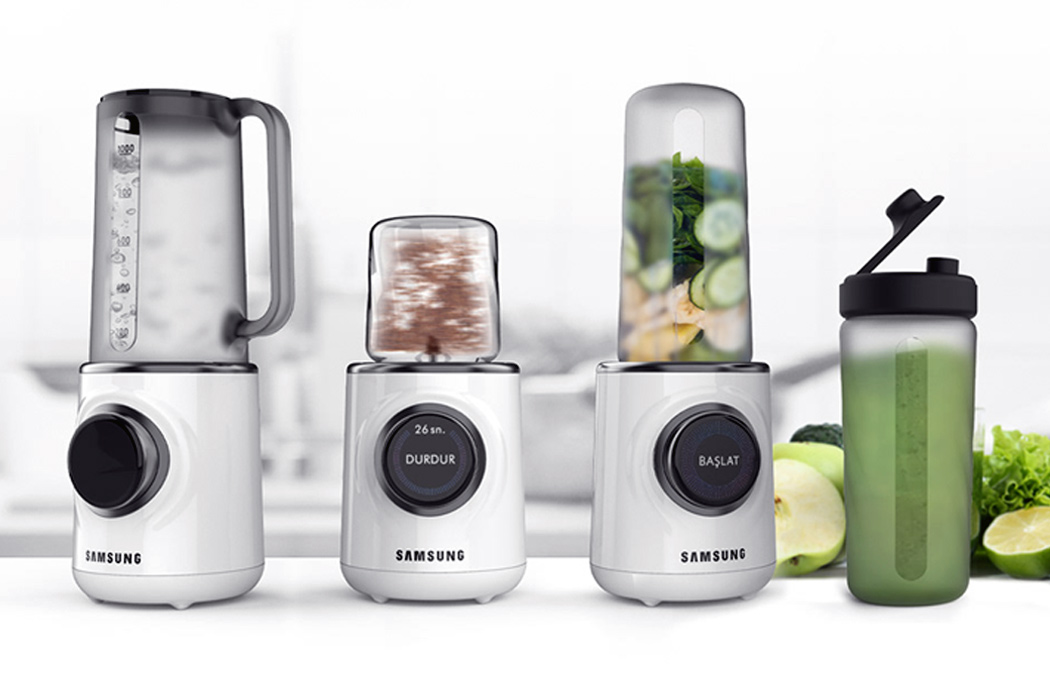
Modular kitchen tools go with small living spaces like bread and butter. Efficiency studios or dormitories are known for their tight corners and compact kitchen space, leaving little room for bulky cookware or jumbo-sized machinery – the more modular a tool, the better when it comes to tiny living. Opting for modular cookware takes up less storage space and the single-engine nature of most modular tools requires less energy for operation, supplying users with plenty of mechanical options without needlessly wasting storeroom or energy. Recognizing the inherent frugality behind the modular design, Berk Can Yıldız imagined what Samsung’s collection of trusted kitchen tools might look like if they were combined into a singular modular household product.
Samsung Barr, Berk Can Yıldız’ modular take on Samsung’s kitchen tools, is a single-engine, modular device used for any type of cooking that might require blending, grinding, or heating. The Samsung Barr functions as either a kettle or soup maker with integrated heating elements and also as a blender, grinder, or juicer for use without added heating elements. The product’s large, front-facing button functions as the unit’s control panel. The touchscreen dial’s usability is akin to a round thermostat’s – its circular formation allows users to adjust aspects of cooking, like levels of temperature and the duration of timers, simply by dragging haptic sensors one way or the other around the screen’s perimeter. Compatible with the Samsung Health app from Google Play, Barr also connects to its app that provides new recipes and health information. Samsung Barr’s inner mechanism only consists of a motor, fan, and vents allowing plenty of airflow, giving Barr a simple construction and compact body, adding to the product’s overall ease-of-use.
Today, many young people are seeking more modest means for living situations – sustainable alternatives like passive house construction or single-living spaces like efficiency studios are chosen over more grandiose options. However, our individual ideas of comfort shouldn’t be sacrificed for the sake of modesty – our generation’s obsession with minimalism lies in simplicity, comfort, and aesthetics, but perhaps not frugality. The choice to live smaller or sustainably, however, will inevitably lead to choosing economical, more efficient alternatives like modular cookware. Designs like Berk Can Yıldız’ reveal how these multi-functional and more sustainable alternatives can save space, energy, and money for not only the people who use them but also for those who produce them.
Designer: Berk Can Yıldız
